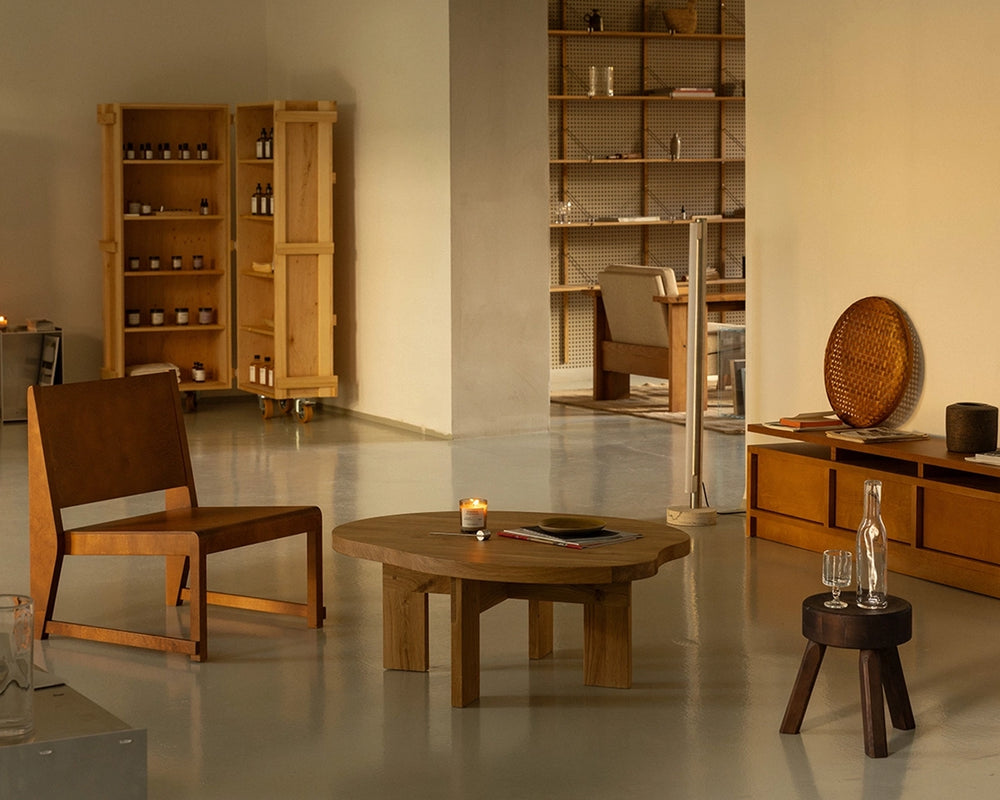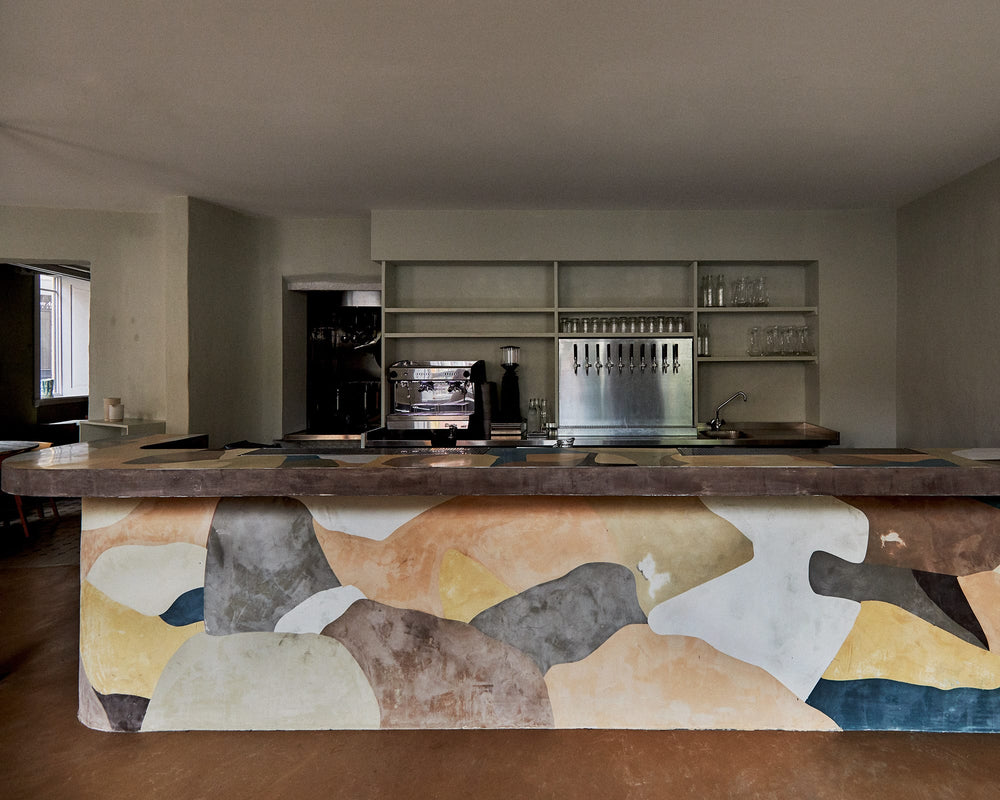
Personal Canvas: Vince Skelly
The Personal Canvas series is a vehicle to dive deeply into craft processes, wherein the common thread lies in human hands and tradition. In this next installment with designer and artist Vince Skelly, the result is a look into his playful vocabulary, formed by sculptural furniture and natural materials.

On the phone with artist and designer Vince Skelly, he is driving back from a log yard in Perris, California, looking at the pieces of wood that they might be discarding. “A lot of the time I’ll find things like their firewood pile; anything they don’t see any use for or they can’t mill up and sell as slabs. That’s where you can often find something really exciting.”

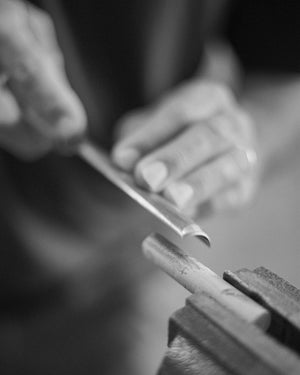
He describes the journey as a field trip, and this feels like the right language to use given the sense of curiosity and play that is embedded in his work: particularly in his most recent collection of pieces that he exhibited at TIWA Select in New York. This fall, twelve new works of his were on view in the Tribeca gallery space, under the exhibition title Play Sculptures, and inspired by mid-century playgrounds, some of which, designed by Jim Miller-Melberg, he grew up with himself outside of Los Angeles in Claremont, California.




For Skelly, the narrative of a show is part of what drives the body of work that he’ll create for it, and give structure and constraints to the process. In this case, he and his wife having a son about a year and a half ago created a perspective shift that helped guide this. And around Claremont, the town where Skelly grew up, there are remnants of midcentury playgrounds and brutalist sculptures that he and his friends would play on. Fortunately, even the ones that have deteriorated or been torn down are well documented, and these became the starting point for the TIWA show—and the impetus to experiment with color in his work for the first time.
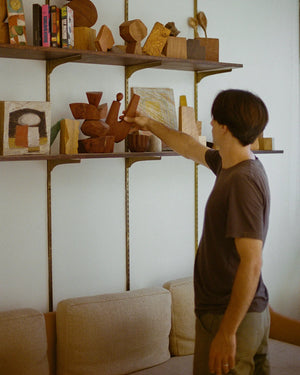

The moment Skelly started thinking about these works as inspiration for the show was with his son at a park in Claremont that he knew from playing in as a kid himself, where he noticed one of these sculptures—formerly a concrete turtle by Miller-Melberg—had been replaced after decades with a green plastic version that was already starting to show its wear. He started thinking about these shapes for play from his childhood, as well as the difference between objects meant to last versus designs made quickly and cheaply.


Skelly’s practice as we know it today began when he was living in San Francisco and studying design. He worked as a graphic designer for about ten years before beginning to experiment with wood carving—which to begin with was inspired by the books he would find at William Stout bookstore, specifically Leslie Williamson’s Handcrafted Modern. This was how he first learned about the work of self-taught artists like JB Blunk, who had also been working in the Bay Area decades prior.


Ten years after first discovering this book and the work it contained, Skelly had moved to Portland, Oregon—an area of the Pacific Northwest of the United States known for its logging industry—and as he describes, “finally built up the courage to get a chainsaw, collect wood that I would see by the side of the road, and start experimenting.” Once he became more comfortable with the process, it became clear that Skelly was shifting naturally to pursuing forms that met in the middle of his interest in megalithic structures like Dolmen and midcentury art, design, and architecture.

“I love the idea of a simple, transparent object that shows you exactly how it’s made.”

In these early days of his practice, Skelly would often take inspiration from the shape of a given piece of wood itself; finding sculptural form within the natural characteristics of the materials that he was finding. Over time, this led to what he describes as a “vocabulary of forms,” or an index of shapes that he can now build off of. Sometimes that means commissions to recreate works that he has already made, and sometimes that means experimenting with these forms and with new found pieces to expand that language—his catalog of works—on the occasion of a gallery show.
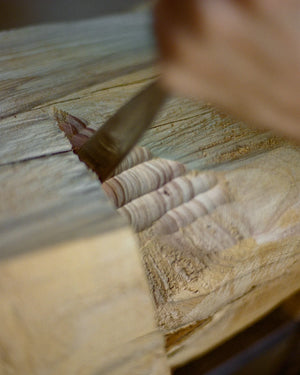

“Finding a discarded tree stump on the side of the road, making it functional while showcasing its innate beauty—that’s a huge part of what continues to inspire this work. That part never gets old.”
As for the distinction between making pieces that are functional and pieces that are decorative, Skelly isn’t too concerned with what category his body of work may fall in. He sees his work as sculptural furniture, and emphasizes that they are one-of-one—no two pieces are exactly alike. His own experience with living alongside handmade objects has had a clear impact on his own practice, and whatever form they may take next, his language of shapes introduce a reverence for our natural world that is perspective-altering. In the classic story Le Petit Prince (The Little Prince), the title character cautions that “all grown-ups were once children, but only few of them remember it.” In our world, we’re fortunate that Skelly seems to be one of them—introducing playgrounds to our homes, and using craft to see beauty in the mundane, where others might pass it by.









